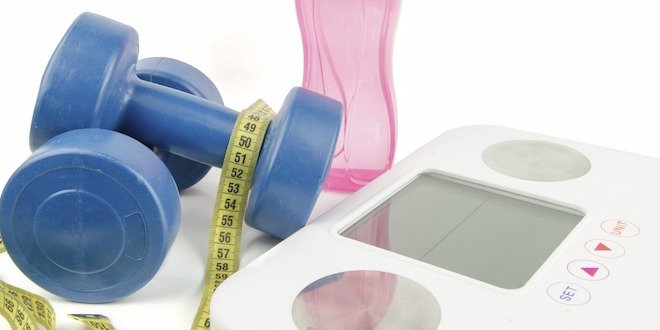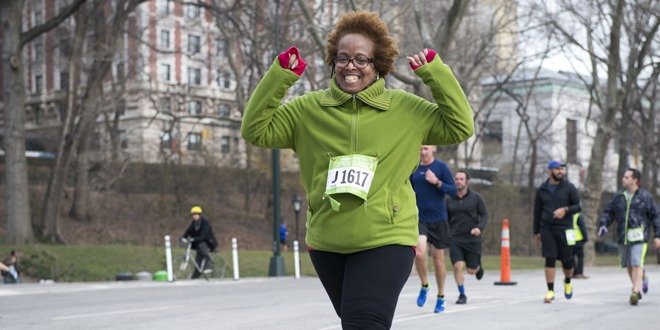
I feel a little sneaky luring you in with that title! The truth is, I have some good news, and I have some bad news. Let’s start with the bad news.
Amount of exercise
Bad news: Diabetes Canada recommends that people with diabetes perform 150 minutes of aerobic exercise each week. That amount of exercise most certainly provides substantial health benefits; however, weight loss is not likely one of them. After reviewing studies that ranged from 12 weeks to 16 months, the American College of Sports Medicine position stand on exercise and weight loss noted that 150 to 225 minutes of physical activity per week results in modest weight loss (about 2 or 3 kilograms); physical activity between 225 and 420 minutes per week results in the greatest weight loss (5 to 7.5 kilograms). Several experts recommend 60 to 90 minutes of physical activity per day; however, less than 5% of Canadian adults do at least 30 minutes of moderate to vigorous activity at least 5 days each week. If you are among those who don’t exercise enough to promote weight loss and think exercise is inconvenient, unpleasant and expensive, please don’t stop reading. Clearly, you are not alone. I promise some good news soon. If you are among the few who exercise more than one hour a day, but still are not losing weight, keep reading.
Good news: Even if you are not getting enough exercise, it may be comforting to know that any amount of leisure-time activity is associated with a significantly lower risk of death, compared with no physical activity at all. And here’s even better news for those of you who are exercising at three to five times the recommended amount: you have a 39% reduction in the risk of dying. So, if you are doing no physical activity at all, for goodness sake, do something. Lower your risk of death!
The ‘D’ word
Bad news: For those of you who exercise a lot but don’t lose weight, it may be because of what you eat. Diet (the ‘D’ word) has a stronger effect on weight loss than exercise. However, most studies show encouraging results when both diet and exercise are combined.
More bad news: Exercising a lot does not mean that you can eat whatever you want. Even professional athletes, who train hard for hours a day, don’t eat whatever they want. Rewarding yourself with food for exercise well done is a sure way to sabotage your efforts. Often your ‘reward food’ will contain more calories than the calories that you just burned off.
Even more bad news: The media has told us that we need special products for fuel. Hundreds of products are available simply to help us exercise. Most people do not need special products or extra fuel for exercise. However, those of you who are taking insulin or medications that increase insulin levels may need to eat a snack to prevent or treat low blood sugar.
Good news: Your Registered Dietitian can help you with personalized strategies to modify your diet for weight loss and exercise.
More good news: As you lose weight, you may require less diabetes medication. Monitoring your blood glucose regularly will help to identify any changes you might you need to make.
Even more good news: Since you don’t need special ‘fuel’ for exercise, you can save money by avoiding gimmicky shakes, smoothies and bars, and by not purchasing food as a reward each time you exercise. If you take insulin or medications that increase insulin levels, your diabetes care team can help you with strategies to prevent low blood sugar levels, so that minimal or no extra carbohydrate is needed.
No pain, no gain
Bad news: Exercise can be painful. As humans, we are naturally averse to pain. You may never understand the person who staggers across the finish line of a marathon, nothing but pain showing on her face, who then hobbles away with a silly grin, staring at the medal around her neck. She has actually paid money for this privilege. Seriously, where is the logic in this?
Good news: Pain is temporary. There is such a feeling of accomplishment and pride that comes from pushing your body beyond its usual comfort level and doing something that you never believed you could do. However, there is a difference between the pain from an injury and the pain that comes from pushing you past your limits. Listen to your body. Don’t push yourself to the point of injury.
More good news: Not all exercise is painful. You don’t need to do intense exercise to get benefits.
Even more good news: If you are still not convinced that exercise – with all its sweat and pain – is for you, it is true that just moving around more burns calories and can promote weight loss. This is called non-exercise activity thermogenesis, or NEAT. NEAT is the energy expended for everything we do that is not sleeping, eating or sports-type exercise. It includes things like walking instead of driving, taking the stairs instead of the elevator, yard work, housework, etc. Really, it includes almost all the things we should be doing instead of sitting. Keep moving. It really works. Even if you do exercise, keep moving when you are not exercising.
How badly do you want it?
Good news: Someone does not become a lawyer without studying for the bar exam. It doesn’t just happen. Well, neither will weight loss. I know the thought of putting in all the time and effort sounds daunting, but if you want it, you will do it. Despite all the negative press, significant numbers of people are exercising and losing weight. The National Weight Control Registry was established in 1994 to identify and investigate the qualities of individuals who have succeeded at long-term weight loss. The registry is tracking more than 5,000 individuals who have lost significant amounts of weight, and have kept it off for long periods of time. Ninety-four percent of the people who joined the registry said they increased their physical activity, with the most frequently reported form of activity being walking. Typically, people reported 60 to 90 minutes of moderate intensity physical activity most days of the week, while not exceeding calorie needs. This doesn’t necessarily mean 60 to 90 minutes at one time; rather, it might mean 20 to 30 minutes of physical activity three times a day.
You can find the time. If you want it, make it happen!


